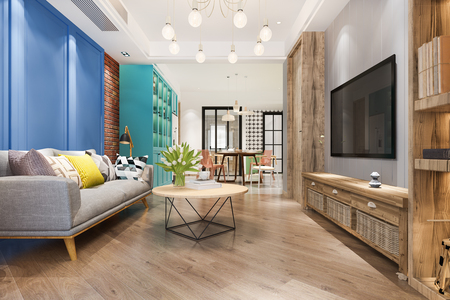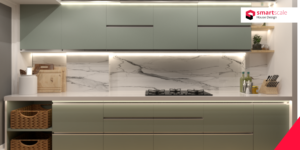When you begin designing or renovating your home, one of the most important decisions you’ll make is choosing the right flooring. Among all the options available today, tiles remain a top choice for the living room due to their durability, style, and ease of maintenance. But knowing how to select tiles for living room can be confusing if you’re not sure what to look for. With so many styles, materials, finishes, and sizes available, the process can quickly become overwhelming.
In this complete guide, we’ll simplify the selection process. We’ll cover everything from choosing the right tile size and finish to understanding color harmony and grout types. By the end, you’ll have a clear roadmap to help you make the best decision for your living room tiles both in terms of function and design.
Why Tiles Are a Great Choice for Living Rooms
Before diving into the details of how to select tiles for living room, it’s important to understand why tiles continue to be one of the most popular flooring choices for this central space in a home. The living room is where we relax, entertain, spend time with family, and host guests so the flooring must be both beautiful and practical. Here’s why tiles make such a smart choice:
1. Durability: Built to Withstand Daily Life
Living rooms experience regular foot traffic, furniture movement, and the occasional spill. Unlike wooden floors that may scratch or wear over time, or laminates that can swell with moisture, tiles offer impressive durability. Whether you choose porcelain, ceramic, or vitrified tiles, you’re investing in a surface that can handle daily stress without cracking, chipping, or fading.
Tiles are also resistant to heat and UV rays, which means even if your living room receives a lot of sunlight, the colors won’t dull over time. For families with kids, pets, or frequent visitors, tiles provide peace of mind thanks to their toughness and longevity.
2. Easy Maintenance: Effortless Cleaning and Care
One of the biggest advantages of tiled flooring is its low-maintenance nature. Dust, dirt, spills, and stains can be easily wiped off the surface with a damp cloth or mop. Unlike carpet, tiles don’t trap allergens, making them a healthier option for households with allergy sufferers.
Tiles are also resistant to moisture and mold when installed properly. This means there’s no need for special cleaning products or deep-cleaning routines. Just regular sweeping and mopping are enough to keep the floor looking clean and polished for years.
For busy families or working professionals who don’t have time for constant cleaning, tiles offer an easy solution without compromising on aesthetics.
3. Style Variety: Endless Design Possibilities
One of the main reasons homeowners love tiled flooring is the incredible variety of styles, colors, textures, and finishes available. Whether your design preference leans toward modern minimalism, cozy traditional charm, or contemporary luxury, there’s a tile to suit your vision.
Here’s what you can explore:
Glossy finish tiles for a sleek, high-end look that reflects light and adds brightness.
Matte finish tiles for a soft, understated appeal with a natural feel.
Wood-look tiles that mimic hardwood floors without the maintenance.
Marble-look tiles for a luxurious vibe without the cost or fragility of real marble.
Patterned or textured tiles to add character and uniqueness to your space.
This wide range of options makes tiles highly adaptable. You can create a seamless floor throughout your home or use different tile types to define zones within an open-plan layout.
4. Cost-Effective: A Flooring Option for Every Budget
Another key benefit of using tiles in your living room is their cost flexibility. You can find a variety of tile options across different price ranges:
Budget-friendly options like ceramic tiles start at affordable rates and still offer decent durability and good looks.
Mid-range tiles, including vitrified and porcelain varieties, provide a balance of strength and style at a moderate price point.
Premium tiles like natural stone or designer tiles can elevate your space with high-end appeal and uniqueness.
Unlike other flooring materials that may require expensive maintenance, polishing, or refinishing, tiles are relatively low-cost in the long term. Even if you’re investing in slightly higher-end tiles, the long lifespan and low maintenance needs often make up for the initial expense.
Additionally, most tiles are easy to replace in case of damage. If one section cracks or chips, you don’t have to redo the entire floor—you can simply replace the affected tiles.
Step-by-Step: How to Select Tiles for Living Room
Choosing tiles isn’t just about looks. Functionality, comfort, lighting, and size all come into play. Here’s a step-by-step guide to help you make an informed decision.
1. Decide the Look You Want
Start by deciding the overall theme or mood you want your living room to have. Ask yourself the following questions:
Do you prefer a modern, sleek style or a cozy, rustic one?
Should the tiles make the space look larger, brighter, or more grounded?
Are you looking to make a bold statement or keep the look subtle?
Your answers will guide your tile choices.
For a Modern Look:
Go for large-format tiles in neutral colors like grey, beige, or white. Glossy finishes and minimal patterns complement modern interiors.
For a Rustic or Traditional Look:
Textured tiles or wood-look porcelain tiles work well. They add warmth and bring a touch of nature indoors.
For a Minimalist Space:
Choose plain matte tiles in light colors. These create a clean, calm environment with minimal visual noise.
2. Choose the Right Tile Size
Tile size affects both the visual appeal and perception of space. Larger tiles (like 24″x24″ or even 48″x24″) give a seamless look with fewer grout lines and make the room feel more spacious. Smaller tiles, on the other hand, can make the space look busy and are usually better for decorative sections or accent walls.
Tips for choosing tile size:
Small rooms: Use medium to large tiles to reduce grout lines and make the area appear bigger.
Large rooms: Large-format tiles add elegance and luxury.
Open-plan living rooms: Use consistent large tiles to unify the space.
3. Select the Right Finish: Glossy, Matte, or Textured?
The tile finish plays a big role in both looks and usability.
Glossy Finish:
Reflects light and brightens the room.
Best for contemporary interiors.
May be slippery when wet, especially if you have children or elderly family members.
Matte Finish:
Non-reflective and provides a more natural feel.
Offers better slip resistance.
Great for rustic, industrial, or minimal themes.
Textured Tiles:
Mimic natural materials like wood, stone, or slate.
Add depth and dimension to the room.
Ideal for accent walls or creating a cozy vibe.
4. Understand Tile Materials
The material you choose will impact not just the appearance but also the durability and maintenance required. Here are some common tile types used in living rooms:
Porcelain Tiles
Highly durable and water-resistant.
Available in a wide variety of styles.
Ideal for high-traffic areas.
Ceramic Tiles
Less dense than porcelain but still quite strong.
Budget-friendly and easy to install.
Best for standard residential use.
Vitrified Tiles
Have a low water absorption rate.
Suitable for heavy foot traffic.
Often used in large commercial or living areas.
Natural Stone Tiles (Marble, Slate, Granite)
Rich in texture and uniqueness.
Requires sealing and regular maintenance.
Gives a luxurious feel to any room.
Wood-Look Tiles
Porcelain tiles designed to mimic natural wood.
Combine the aesthetics of wood with the strength of tiles.
Ideal for a warm, inviting atmosphere.
5. Choose the Right Color Palette
Your tile color should complement your living room’s overall color scheme including walls, furniture, and decor.
Light-colored tiles (beige, ivory, white):
Create a sense of openness.
Make small rooms feel larger.
Reflect more natural light.
Dark-colored tiles (charcoal, walnut, deep grey):
Add a cozy and elegant feel.
Best for large living rooms.
Hide dirt better but can make the room feel smaller.
Neutral tiles:
Offer flexibility to change decor without changing flooring.
Stay timeless and suit a variety of interior themes.
6. Think About Grout Color and Joint Width
The grout the material between tiles is often overlooked, but it greatly affects the look of your floor.
Matching Grout:
Creates a seamless appearance.
Makes the space feel larger.
Contrasting Grout:
Highlights individual tiles and shapes.
Adds a creative or patterned look.
Also, smaller grout joints offer a cleaner look but require precise installation, while wider joints may tolerate minor tile variations better.
7. Focus on Durability and Maintenance
While beauty is important, you should also consider the tile’s practical features:
Foot traffic: Choose high-durability tiles if your living room sees a lot of activity.
Scratch resistance: Especially important if you have pets.
Stain resistance: Choose tiles that don’t absorb spills easily.
Ease of cleaning: Smooth-surfaced tiles are easier to clean than textured ones.
Porcelain and vitrified tiles tend to offer the best combination of strength and low maintenance.
8. Use Accent Tiles for Visual Interest
If you want to create a focal point or break the monotony, consider using accent tiles in a specific area. This could be behind the TV unit, around a fireplace, or on a feature wall. You can choose patterned tiles, 3D-textured designs, or tiles in contrasting colors for this purpose.
Accent tiles should not overpower the main flooring. Use them in moderation to enhance the room’s personality.
9. Test Tiles Before Finalizing
Once you’ve shortlisted a few tile options, ask for samples. Place them in your living room at different times of the day to observe how they look in natural and artificial light. Some colors may look different depending on lighting, wall color, and surrounding elements.
Also, walk barefoot on them to test how they feel underfoot. Some glossy tiles can feel cold and slippery, while matte or textured tiles may feel more comfortable.
10. Budget Wisely
Living room tiles come in a wide range of prices—from ₹30 per sq. ft. to over ₹300 per sq. ft. depending on material, brand, and finish. Besides tile cost, also factor in:
Delivery charges
Tile cutting and wastage
Grout and adhesive
Labor charges
A good rule of thumb is to order about 10% more tiles than the calculated area to account for breakage or future repairs.
Bonus Tips on How to Select Tiles for Living Room
Don’t just follow trends choose tiles that suit your personal style and lifestyle.
Consider long-term wear and tear, especially if your living room is used frequently.
Stick to reputable tile brands for better quality and warranty.
Work with a skilled tile installer to ensure clean, professional results.
Conclusion
By now, you should feel more confident about how to select tiles for living room. It’s not just about picking a pretty pattern. You need to balance style, comfort, durability, and budget. Whether you want a luxurious marble finish or a cozy wooden look, the right tiles can transform your living room into a space that’s both stylish and functional.
Invest some time in exploring different options, testing samples, and visualizing the final look. With the right planning and decisions, your tiled living room can become a long-lasting source of beauty and comfort in your home.
Want expert help with your living room design?
At SmartScale House Design, we offer curated 3D designs and expert tile consultation tailored to your home’s layout and style.
Contact us today to start building your dream space!








